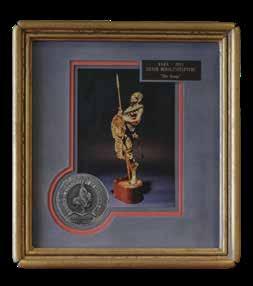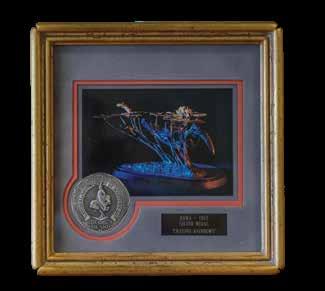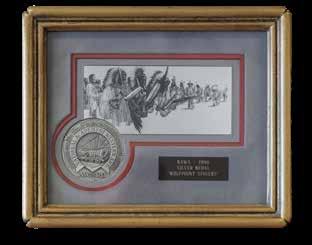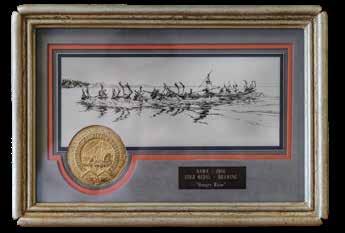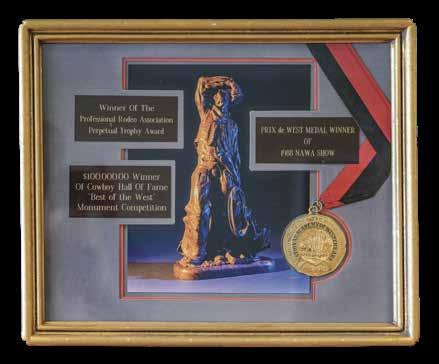
2 minute read
NAWA
Utah’s Bingham Canyon Mine is visible from space, a man-made gash in the Earth that’s nearly a mile deep and 2½ miles wide. Mining for gold and silver began here in the early 1900s, and miners have slowly dug deeper and wider over the years, but copper has been their primary pursuit.
Copper is combined with tin, zinc or manganese to make bronze, an ancient metallurgical recipe dating back nearly 5,000 years. It was mankind’s most significant technological achievement at the time, allowing people for the first time to make metal weapons and tools.
Oil comes from the earth too, and the energy boom of the 1970s resulted in money flooding into the Western art market. The wildcatters identified with its masculine, individualistic themes, and artists, like all entrepreneurs in wellfunctioning markets, responded in kind.
The money attracted opportunists into the Western art market in the late 1970s and early 1980s, and Hollis was troubled by what he saw. To him, they were carpetbaggers, people who’d come to capitalize on the good times, and who didn’t fully appreciate or understand what he and his community of artists were trying to do. They were simply there to make a quick buck at the expense of others before moving on to other lucrative opportunities elsewhere.
Thus, a battle began to brew in the late 1980s and early 1990s over the future of the National Academy of Western Art. It pitted newcomers against the core group of artists who had formed the organization in 1973, and whose purpose was to maintain the highest standards. In other words, NAWA had been very selective about who they let in, and more importantly, who they kept out.
The efforts of the National Cowboy Hall of Fame, led by then-Director Dean Krakel, wanted NAWA opened up to allow more artists into the organization. There was money to be made, the markets were booming and there was no reason to place artificial restrictions on tapping into its growth.
Hollis and a group of his colleagues disagreed, and thus began a bitter controversy that nearly tore NAWA apart.
“If bent on the idea of displaying more ‘saleable’ work along with the NAWA exhibit, let it be hung in the gift shop where it belongs so as not to taint the creations of those to whom art is a religion, not a circus!”
Hollis wrote to NAWA. “These past, present and future works must be more than products. The purpose of a circus is to entertain and serve popcorn. The purpose of an institutional art show should be to enlighten and serve dignity.
“We must not let this group of select NAWA artists become an endangered species; it may be the only hope left for a legacy that could rise above all others,” he continued. “If we were in this chosen profession for profit only, we would sell art supplies instead of using them.”
Krakel did not relent. Plans to change NAWA –in spite of the artist’s demands – moved forward. Hollis, who’d grown up poor and lived, and nearly died, pursuing his art, commented later: “I’ve always had a way of committing economic suicide,” he conceded.
The artist never again won the Prix de West, although Welcome Sundown, created from copper, tin and money, still stands guard at the institution’s front entryway.
An artistic achievement matched by few others, Hollis remains one of just seven repeat winners of the NAWA Prix de West Purchase Award. He is also one of just a handful of NAWA artists to have received more than 10 awards since the organization’s 1973 inception. A testament to his versatility, he did so in both drawing and sculpting.

